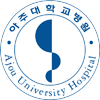Is Craniofacial Asymmetry Progressive in Untreated Congenital Muscular Torticollis?
Seung Jo Seo, M.D. Shin-Young Yim, M.D. Il Jae Lee, M.D., Ph.D. Dae Hee Han, M.D.
Chee Sun Kim, M.D. Hyoseob Lim, M.D. Myong Chul Park, M.D.,Ph.D.
Suwon, Republic of Korea
Background Although craniofacial asymmetry is frequently involved in patients with congenital muscular torticollis, it has not been evaluated appropriately. The authors analyzed preoperative craniofacial asymmetry objectively and confirmed the relationship between craniofacial asymmetry and aging in congenital muscular torticollis patients who underwent surgical release.
Methods The authors retrospectively measured preoperative craniofacial asymmetry using the Cranial Vault Asymmetry Index and intercommissural angle and reviewed preoperative rotational and flexional deficit of neck movement for 123 congenital muscular torticollis patients who underwent surgical
release at Ajou Medical Center from February of 2007 to February of 2011. The relationships among Cranial Vault Asymmetry Index, intercommissural angle, rotational deficit, flexional deficit, and age were analyzed. Mean values of dependent variables were compared after patients were grouped by age.
Results Mean age at operation was 82.5 months (range, 5 to 498 months). Seventy-one percent (n = 87) of patients had a significant cranial asymmetry and 87 percent (n = 107) had a significant facial asymmetry. In correlation analysis, intercommissural angle increased proportional to age (r = 0.334, p =
0.000), especially before 3 years (r = 0.42, p = 0.001). Cranial Vault Asymmetry Index was unrelated to age or rotational or flexional deficit. Rotational deficit decreased proportional to age (r = ?0.229, p = 0.032). By analysis of variance test, intercommissural angle and rotational deficit between the age groups were statistically significantly different (p < 0.05).
Conclusions In congenital muscular torticollis, facial asymmetry is progressive if the contracted sternocleidomastoid muscle is not released, although cranial asymmetry is already determined in those younger than 6 months. Early correction of torticollis should be considered to prevent progression of facial asymmetry in congenital muscular torticollis patients. (Plast. Reconstr. Surg.132: 407, 2013.)
CLINICAL QUESTION /LEVEL OF EVIDENCE: Risk, III.
열기 닫기
